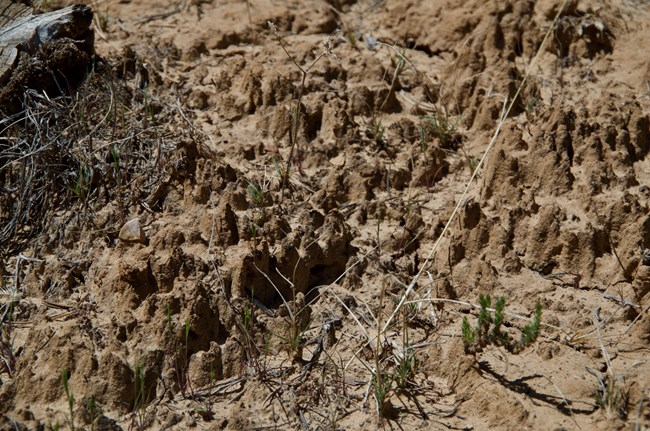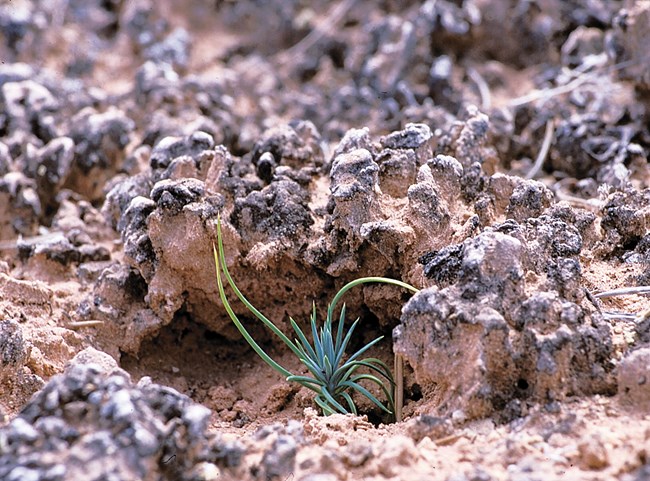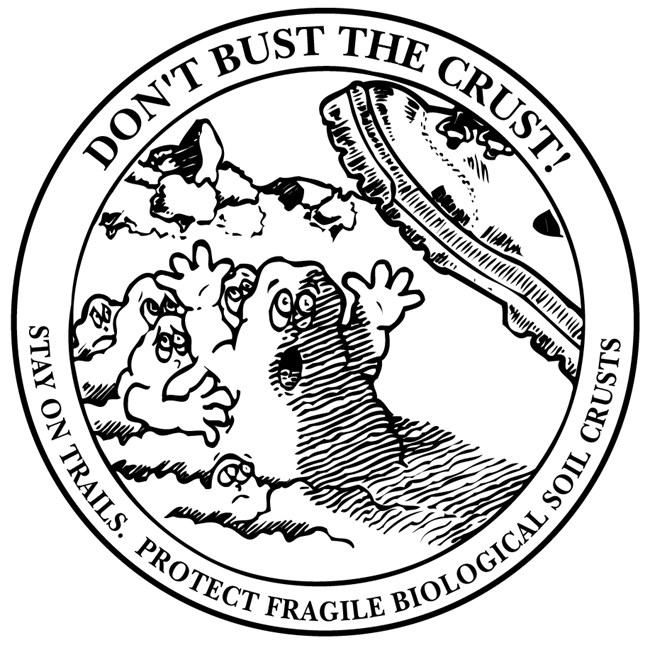
NPS Photo/J. Ellis What is biological soil crust?Sometimes known as cryptobiotic soils, biological soil crust is a living carpet of organisms. They are primarily made up of cyanobacteria (blue-green algae), lichens, fungi, mosses, and algae. It can be found all over the world, even in the arctic! In some places, it make up as much of 70% of the ground cover. 
NPS Photo What does it do?Biological soil crusts provide many different ecosystem benefits. They prevent erosionWhen the soil is wet, the cyanobacteria move around and leave behind a trail of sticky mucilage. This acts like a glue to hold the soil in place. Small root structures within the crust also helps anchor the soil. They absorb waterThe crusts also act as a sponge and absorb water when it rains and slowly release it into the surrounding soil. This helps make sure that the heavy rainfall from monsoons is available for longer periods of time. Biological soil crusts can absorb up to ten times their volume in water! They also help reduce the rates of evaporation. They provide nutrientsBiological soil crusts are a source of organic material and nutrients for other plants. The cyanobacteria within the crust secrete compounds that help stimulate the growth of other plants. Cyanobacteria and lichens are capable of fixing atmospheric nitrogen and making it available for other plant life.
NPS Photo Why do we care?These crusts are very fragile--most of their biomass is in the top 1/8th of an inch of soil! When damaged, they can take 20-250 years to regenerate. Areas that have been stripped of the soil crusts are vulnerable to erosion, flooding, dust storms, loss of organic material, and invasion by non-native weeds.How do we protect it?When we stay on the trails while hiking, we can help protect the biological soil crust! Young, immature crusts are nearly indistinguishable from dirt. It develops the lumpy texture and dark color as it matures. When hiking in areas without designated trails, sticking to rocks, washes, and other durable surfaces can help protect the crust. |
Last updated: May 6, 2025
